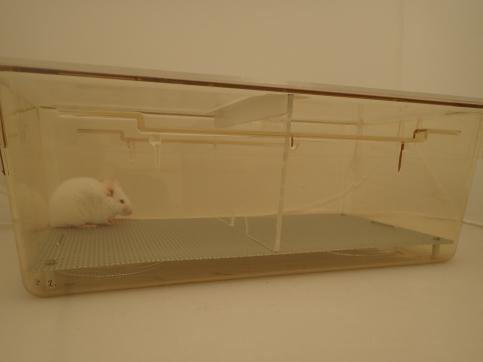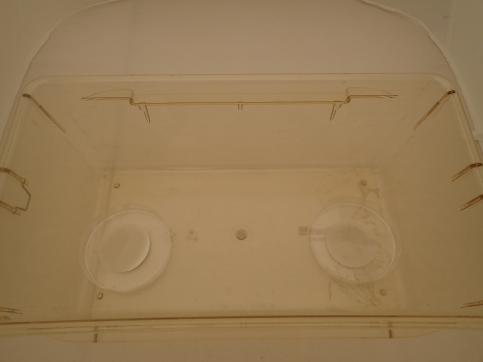A total of 60 CD-1 mice were used in this study. All mice were laboratory-born and thus predator-naïve, and were between 90 and 130 days of age at the start of the study.
The mice were presented with seven different odor stimuli; five blood odors (cat, horse, male/female mice and human), one blood odor component (trans-4,5-epoxy-(E)-2-decenal) and one fruit odor component (n-pentyl acetate).
The test arena was comprised of a modified standard mouse cage (40 x 25 x 15 cm) with a perforated floor. A transparent lid with an attached vertical plexiglass wall subdivided the cage into two compartments of equal size.

On one side of the arena, underneath the perforated floor, was a petri dish with an odor and on the other side was a petri dish with a blank stimulus (diethyl phthalate).

For ten minutes the following parameters were recorded:
- Time spent in each of the two compartments (as an indicator of preference or aversion to an odor)
- Number of switches between the two compartments (as an indicator of overall activity level of the animal)
- Number of fecal pellets dropped during the test (as an indicator of anxiety)
Responsible for this page:
Director of undergraduate studies Biology
Last updated:
05/02/16
